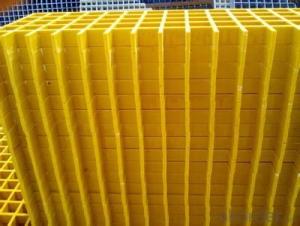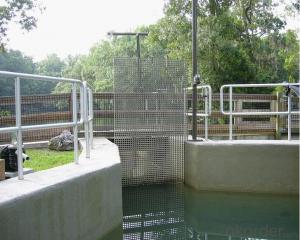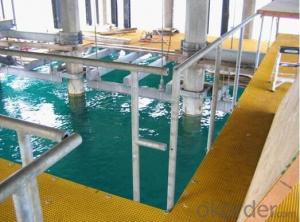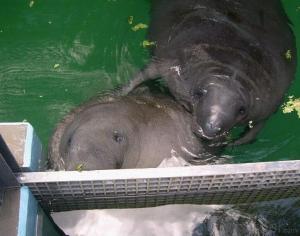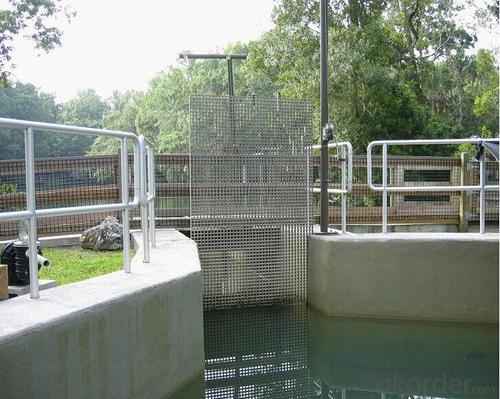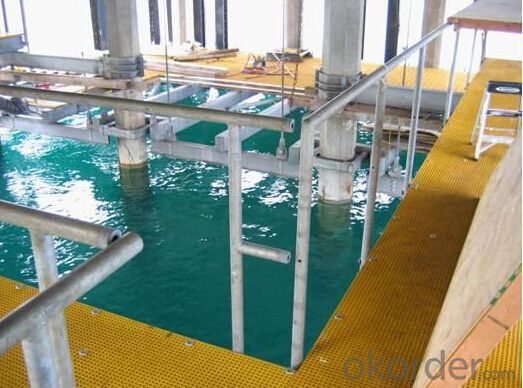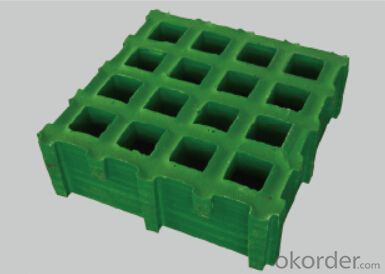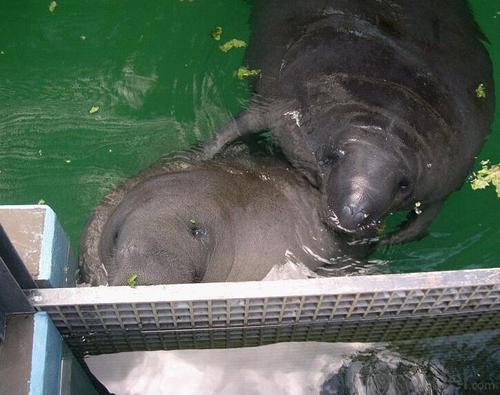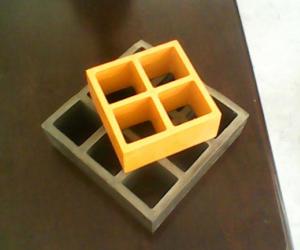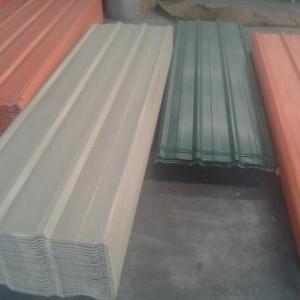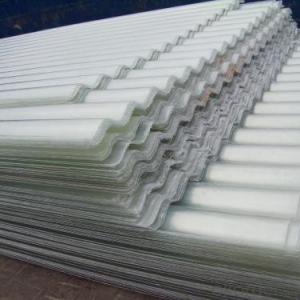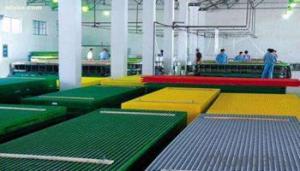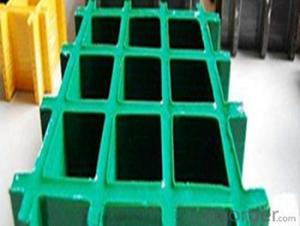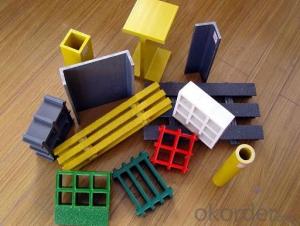FRP Pultrusion Profiles - High Strength Durable Anti-Corrosion Pultruded Fiberglass FRP Grating
- Loading Port:
- Shanghai
- Payment Terms:
- TT OR LC
- Min Order Qty:
- 10 pc
- Supply Capability:
- 8000 pc/month
OKorder Service Pledge
OKorder Financial Service
You Might Also Like
Specification:
FRP molded grating made of vertical and horizontal continuous fiberglass fully soaked in unsaturated polyester resin giving perfect bi-directional mechanical properties. Combining unmatched corrosion resistance with strength, long life and safety, molded grating provide the ultimate in reliable performance, even in the most demanding corrosive conditions. Besides, it is easy to cut and install. CNBM offer the widest selection with panel sizes, colors and slip resistant surfaces, clients can avail FRP grating your specific requirements.
Product Features:
- Light but high loaded strength
- High anti-corrosion and anti-aging
- Easy installation and maintenance
- Low maintenance
- Non-conductive
- Lowest in life cycle cost
- Corrosion Resstance
- Anti-slippery
- Various sizes and color available
Colour Design:
To satisfy customer's design project, CNBM grating offers a wide selection of grating colors to choose from. The standard colors available for fiberglass grating as following:
- Blue
- Red
- Yellow
- Green
- Light Grey
- Dark Grey
Custom colors of fiberglass grating may be available upon request, you can contact us learn more.
Moded Grating Sizes List:
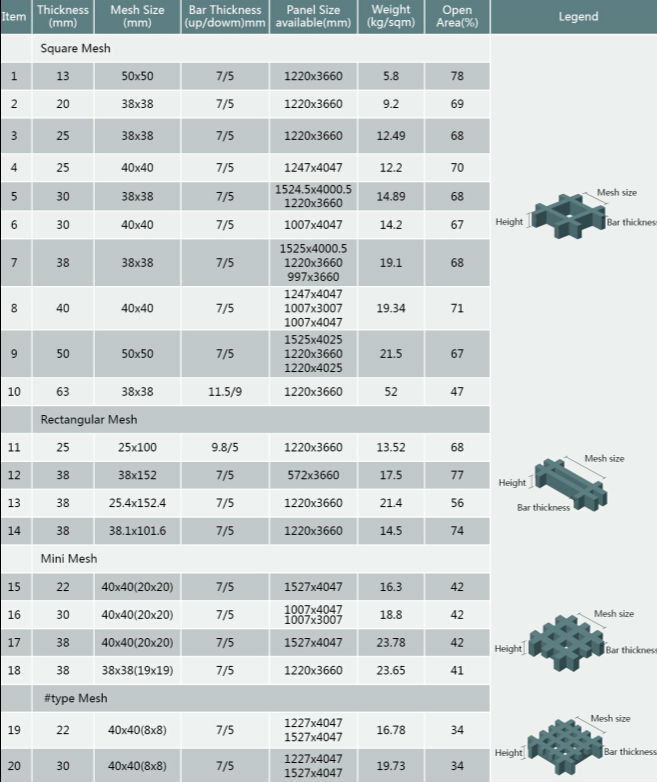
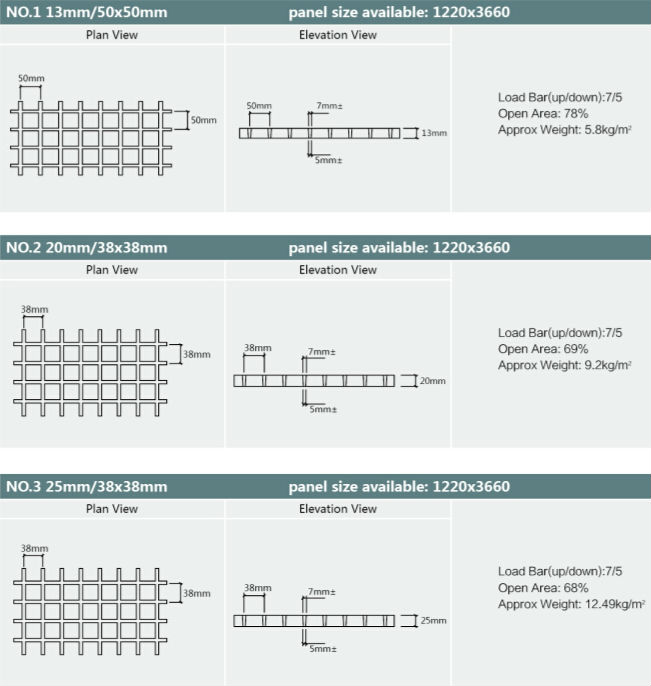
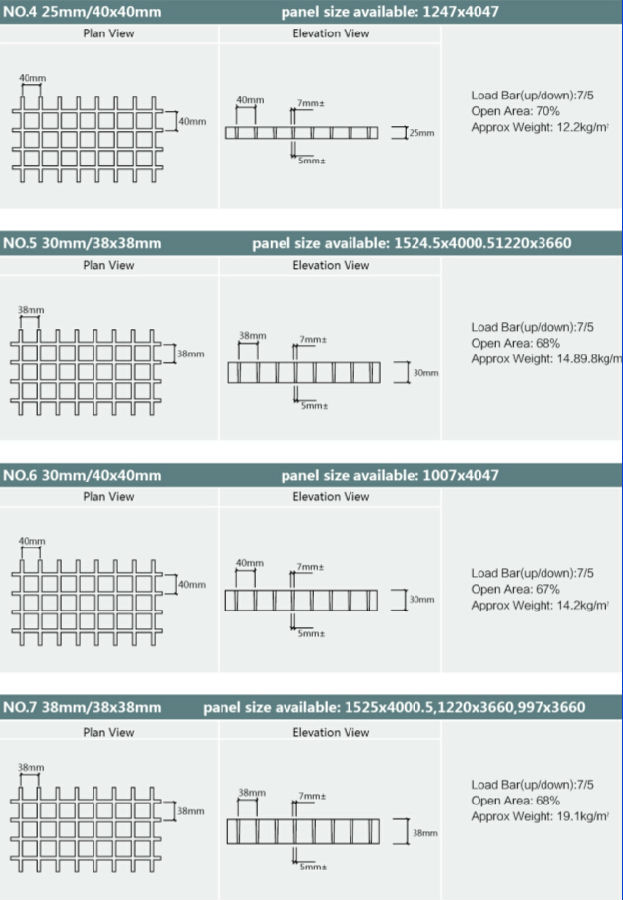
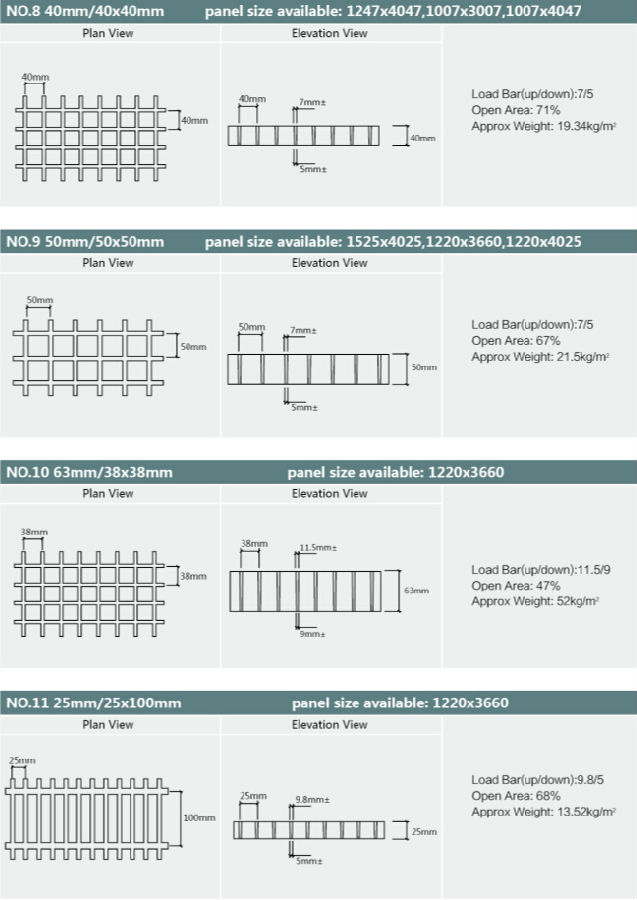
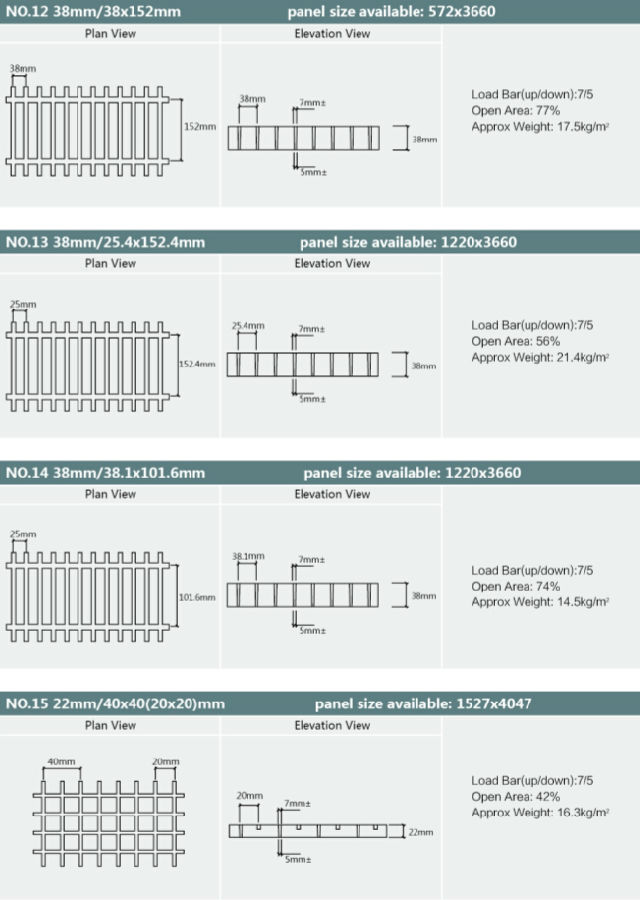
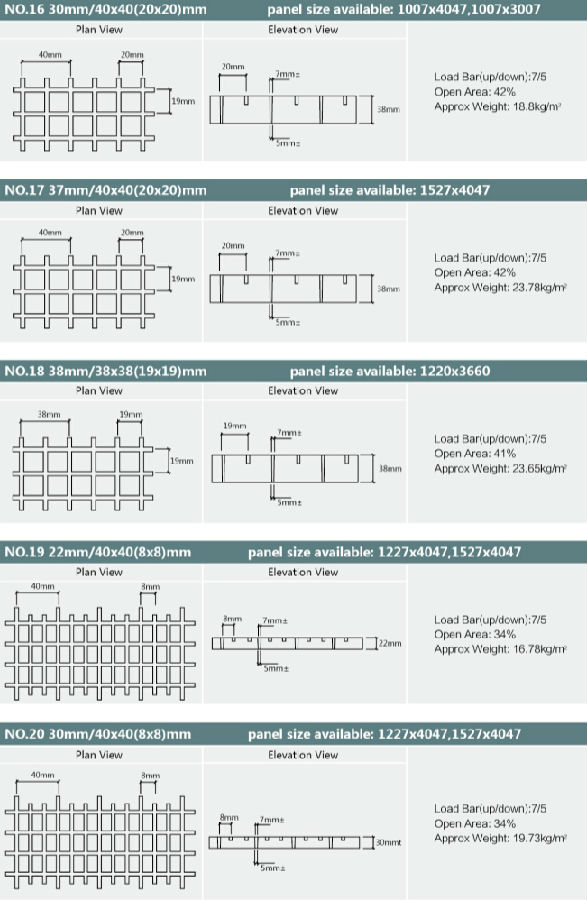
- Q: Are FRP pultrusion profiles resistant to chemicals used in semiconductor manufacturing?
- Yes, FRP pultrusion profiles are highly resistant to the chemicals typically used in semiconductor manufacturing. The composite materials used in FRP profiles have excellent chemical resistance, making them ideal for withstanding the corrosive effects of various chemicals used in this industry.
- Q: Can FRP pultrusion profiles be used in the construction of highway guardrails?
- Highway guardrails can utilize FRP (Fiber Reinforced Polymer) pultrusion profiles. These profiles possess several advantages that render them appropriate for this purpose. To begin with, FRP pultrusion profiles combine strength with a lightweight nature, making them ideal for highway guardrails. Their high strength-to-weight ratio enables them to provide the necessary structural support while being significantly lighter than conventional materials such as steel. This facilitates easier and more cost-effective transportation, installation, and maintenance. Moreover, FRP pultrusion profiles exhibit corrosion resistance, unlike steel, which is susceptible to rusting over time due to exposure to harsh weather conditions. The absence of corrosion in FRP guardrails ensures their durability and longevity, thereby reducing the frequency of repairs or replacements. In addition, FRP pultrusion profiles are non-conductive, meaning they do not conduct electricity. This feature is crucial for highway guardrails as it eliminates the risk of electrical shock in the event of accidents involving power lines or lightning strikes. Furthermore, FRP pultrusion profiles can be manufactured in various shapes and sizes to meet the specific requirements of highway guardrails. They can be designed to possess the necessary stiffness and impact resistance to withstand the forces exerted by vehicles during accidents or collisions. In conclusion, FRP pultrusion profiles offer a suitable material for constructing highway guardrails due to their lightweight, corrosion-resistant, non-conductive, and customizable properties. They provide a cost-effective and durable solution that contributes to enhancing safety on highways.
- Q: Can FRP pultrusion profiles be used in wastewater treatment facilities?
- Indeed, FRP pultrusion profiles have the capability to be utilized in wastewater treatment facilities. These profiles possess numerous benefits, including a high strength-to-weight ratio, resistance to corrosion, and durability, all of which make them highly suitable for the challenging conditions found in such facilities. In wastewater treatment facilities, there exists a wide range of applications where FRP pultrusion profiles can be effectively employed. These applications encompass walkways, handrails, ladders, grating, and structural supports, among others. The corrosion resistance of FRP makes it particularly well-suited for deployment in areas that are exposed to moisture and the chemicals present in wastewater. Furthermore, the lightweight nature of FRP profiles simplifies the installation process and reduces the burden placed on supporting structures. The durability of FRP pultrusion profiles guarantees long-term performance, even in aggressive environments. They exhibit a remarkable resistance to chemical attacks, UV radiation, and bacterial growth, rendering them highly appropriate for wastewater treatment applications. Additionally, FRP profiles can be tailored to meet specific load requirements and can be easily fabricated to accommodate various shapes and sizes. Furthermore, FRP pultrusion profiles possess outstanding electrical insulation properties, which can prove advantageous in wastewater treatment facilities where electrical safety is of utmost concern. To summarize, FRP pultrusion profiles can be effectively employed in wastewater treatment facilities due to their corrosion resistance, durability, lightweight nature, and versatility in terms of design and fabrication. These profiles provide long-lasting solutions for a variety of applications within these facilities, ensuring operational efficiency and minimizing maintenance needs.
- Q: Can FRP pultrusion profiles be used in pedestrian bridges?
- Yes, FRP pultrusion profiles can be used in pedestrian bridges. FRP (Fiber Reinforced Polymer) pultrusion profiles offer several advantages such as high strength-to-weight ratio, corrosion resistance, and durability, making them suitable for pedestrian bridge applications. These profiles can be customized to meet specific design requirements, ensuring the safe and efficient construction of pedestrian bridges.
- Q: Can FRP pultrusion profiles be used in the construction of wastewater treatment tanks?
- Indeed, wastewater treatment tanks can effectively utilize FRP pultrusion profiles. These profiles are renowned for their exceptional strength-to-weight ratio, resistance to corrosion, and longevity, making them an optimal option for harsh environments such as wastewater treatment facilities. To manufacture FRP pultrusion profiles, continuous fibers like glass or carbon are drawn through a resin bath and subsequently through a heated die to attain the desired shape. This process yields profiles with consistent cross-sections and outstanding mechanical properties. In the construction of wastewater treatment tanks, FRP pultrusion profiles can serve various purposes. They can function as structural components, like beams, columns, and bracing systems, offering the necessary strength and rigidity to support the tank structure. Additionally, FRP profiles can reinforce concrete structures, bolstering their durability and resistance against chemical attack from the wastewater. Moreover, FRP pultrusion profiles can be engineered to endure the corrosive impact of the chemicals and gases found in wastewater treatment tanks. Unlike conventional materials such as steel or concrete, FRP exhibits a high resistance to corrosion, guaranteeing an extended service life and reduced maintenance expenses. Furthermore, FRP profiles provide advantages in terms of installation and transportation. They are lightweight, enabling easier handling and diminished labor requirements during construction. The modular nature of FRP profiles also facilitates swift assembly and disassembly, simplifying maintenance and modifications. Overall, incorporating FRP pultrusion profiles in the construction of wastewater treatment tanks offers numerous benefits, including superior strength, corrosion resistance, durability, and ease of installation. These advantages render FRP a dependable and cost-effective choice for wastewater treatment facilities.
- Q: Are FRP pultrusion profiles resistant to alkalis?
- Yes, FRP (Fiber Reinforced Polymer) pultrusion profiles are generally resistant to alkalis. This is due to the fact that FRP composites are non-metallic materials that are composed of a polymer matrix reinforced with fibers, such as glass or carbon. The polymer matrix in FRP pultrusion profiles provides excellent resistance to alkalis, making them suitable for applications in environments where alkalis are present, such as chemical processing plants, wastewater treatment facilities, or marine structures. However, the specific resistance of FRP pultrusion profiles to alkalis may vary depending on the type of polymer resin used and the concentration and temperature of the alkali solution. Therefore, it is important to consult the manufacturer's specifications or conduct specific tests to ensure the compatibility of FRP pultrusion profiles with the intended alkali environment.
- Q: What is the cost of FRP pultrusion profiles compared to other materials?
- The cost of FRP pultrusion profiles is generally lower compared to other materials such as steel or aluminum. This is due to the relatively low cost of raw materials used in the manufacturing process, as well as the efficiency and speed of the pultrusion production method. Additionally, the long lifespan and low maintenance requirements of FRP pultrusion profiles make them a cost-effective choice in the long run.
- Q: Can FRP pultrusion profiles be used in the construction of wind turbine blades?
- Indeed, FRP pultrusion profiles have the capability to be utilized in the construction of wind turbine blades. There are several advantages offered by FRP pultrusion profiles that render them suitable for this purpose. To begin with, FRP pultrusion profiles possess a lightweight yet robust nature, a crucial characteristic for wind turbine blades since they must endure the aerodynamic forces exerted by the wind. The high strength-to-weight ratio of FRP pultrusion profiles permits the creation of longer and more effective blades. Moreover, FRP pultrusion profiles exhibit exceptional corrosion resistance properties, a vital attribute for wind turbines that are exposed to harsh weather conditions. In contrast to traditional materials like steel, FRP does not corrode, thereby ensuring an extended service life for the wind turbine blades. Additionally, FRP pultrusion profiles are customizable to satisfy specific design requirements. This flexibility allows for the optimization of blade performance by tailoring the shape, thickness, and stiffness of the profiles to maximize energy capture and minimize fatigue. Furthermore, FRP pultrusion profiles possess good fatigue resistance, enabling them to endure repeated loading cycles without experiencing significant performance degradation. This is particularly crucial for wind turbine blades, which encounter cyclic loading due to wind gusts and changes in wind direction. Lastly, FRP pultrusion profiles are electrically non-conductive, a beneficial trait for wind turbine blades as it eliminates the risk of electrical discharge during operation. In conclusion, the lightweight, strong, corrosion-resistant, and customizable nature of FRP pultrusion profiles makes them an outstanding choice for the construction of wind turbine blades. This contributes to the advancement of more efficient and durable wind energy systems.
- Q: Can FRP pultrusion profiles be used in the construction and building materials industry?
- Yes, FRP pultrusion profiles can be effectively used in the construction and building materials industry. These profiles offer several advantages such as high strength-to-weight ratio, corrosion resistance, and dimensional stability, making them suitable for a wide range of applications including structural elements, handrails, gratings, and reinforcements. Additionally, FRP pultrusion profiles can be easily customized to meet specific project requirements, making them a popular choice in the industry.
- Q: Are FRP pultrusion profiles resistant to UV degradation?
- Yes, FRP pultrusion profiles are generally resistant to UV degradation. Pultrusion profiles made from fiberglass reinforced plastic (FRP) are manufactured using a combination of resin and glass fibers. The resin used in the manufacturing process is typically formulated to provide resistance to UV radiation. This UV resistance helps to protect the FRP pultrusion profiles from the harmful effects of prolonged exposure to sunlight. FRP pultrusion profiles have been extensively tested and have demonstrated excellent resistance to UV degradation. They are commonly used in outdoor applications where they are exposed to sunlight, such as in construction, infrastructure, and marine industries. UV resistance ensures that the FRP pultrusion profiles maintain their structural integrity, color, and aesthetic appearance over an extended period of time. However, it is important to note that the level of UV resistance may vary depending on the specific formulation of the resin used in the manufacturing process. Different manufacturers may use different resins with varying levels of UV stabilizers. It is recommended to consult with the manufacturer or supplier to ensure that the specific FRP pultrusion profiles being used are designed to withstand the UV conditions of the intended application. Regular maintenance and periodic inspection of the FRP pultrusion profiles are also important to ensure their long-term UV resistance. This may include cleaning, applying protective coatings, or using UV-blocking additives if necessary. By taking these precautions, the UV resistance of FRP pultrusion profiles can be further enhanced, ensuring their durability and longevity in outdoor environments.
Send your message to us
FRP Pultrusion Profiles - High Strength Durable Anti-Corrosion Pultruded Fiberglass FRP Grating
- Loading Port:
- Shanghai
- Payment Terms:
- TT OR LC
- Min Order Qty:
- 10 pc
- Supply Capability:
- 8000 pc/month
OKorder Service Pledge
OKorder Financial Service
Similar products
Hot products
Hot Searches
Related keywords
